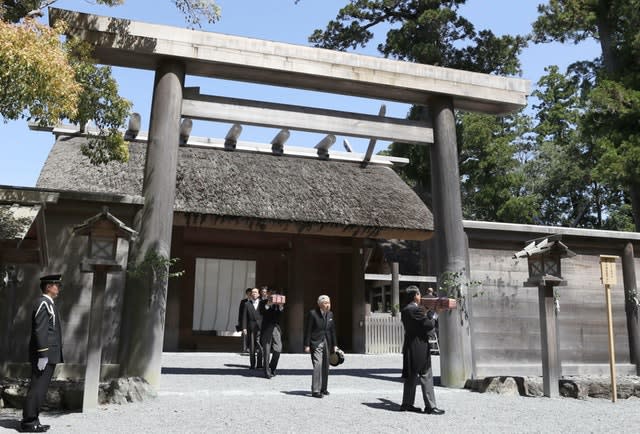Japanese emperor performs ritual to report abdication to Shinto gods
Emperor Akihito has prayed at a Japanese shrine in a ritual to report his upcoming abdication to the Shinto gods.
The 85-year-old emperor will retire on April 30 in the first abdication in 200 years – a rarity in Japan’s imperial history.
Crown Prince Naruhito will succeed to the Chrysanthemum Throne on May 1.

Akihito performed the “Shinetsu no Gi” ritual at Ise Shrine in western Japan as part of the succession process.
Dressed in a tuxedo, he headed into the shrine with palace officials holding up two imperial treasures — a sword and a jewel. A third treasure, a mirror, is kept at the shrine.
The treasures were brought from the palace in Tokyo and travelled with the emperor, and will be handed to Naruhito after his succession.
Akihito’s daughter and the shrine’s head priest, Sayako Kuroda, also attended.

Ise Shrine was a centre of Japan’s wartime emperor worship that still attracts political and business leaders today.
Japanese emperors were once believed to be direct descendants of the sun goddess Amaterasu, who is enshrined at Ise and who sits at the top of “yaoyorozu”, or eight million gods of all things in Shinto.
Rituals at Ise are intended for the imperial family, and the emperor was the head priest until 1945 while Shinto was the state religion and the emperor was said to be a living god.
Shinto, a religion perhaps as old as Japan itself, is a rich blend of folklore, reverence for all things natural and the Japanese nation.

 Yahoo News
Yahoo News 